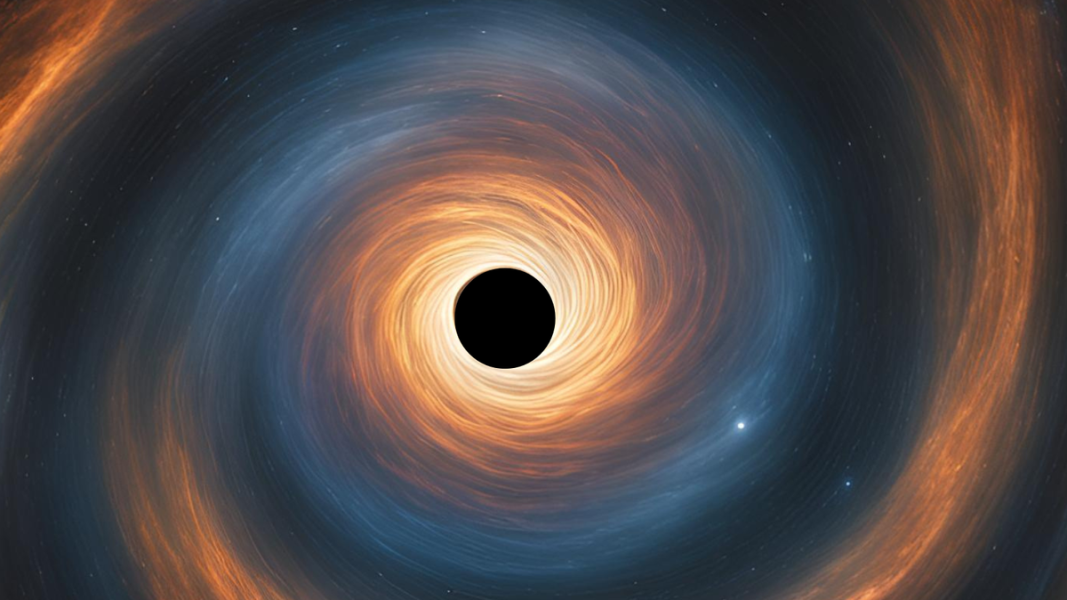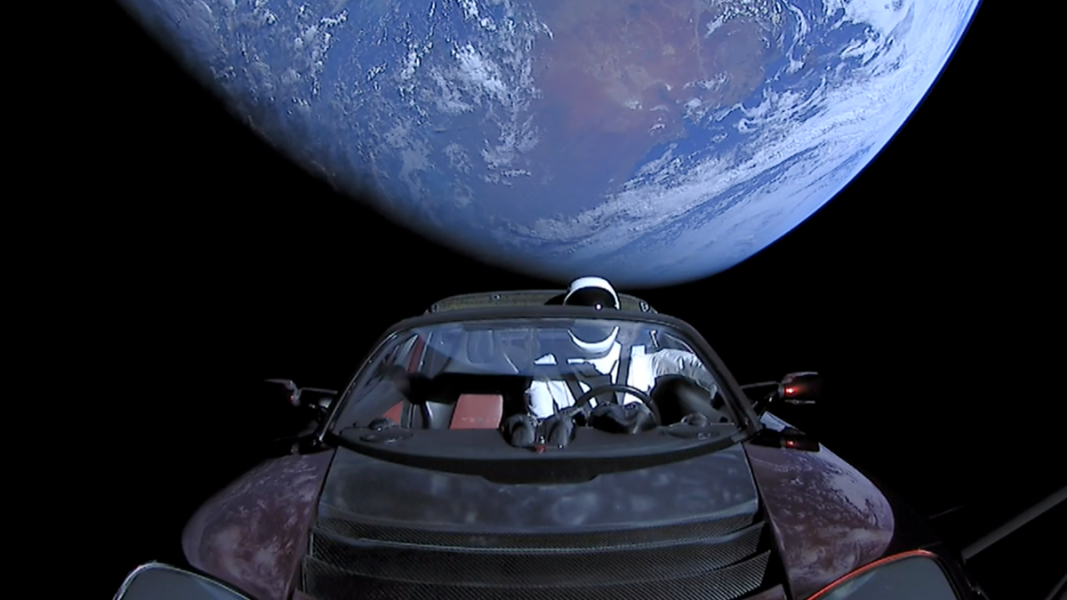Our first “Earth-like” exoplanets probably won’t have atmospheres – Big Think

When it comes to finding life in the Universe, there’s still only one place that we know of that has it: right here on planet Earth. However, as science has recently shown us, both the raw ingredients needed for life as well as the conditions needed for life to flourish are very likely ubiquitous across the Universe, including right here in our own Milky Way. Earth may be very special in the sense that we — an intelligent, tool-using, technologically advanced civilization — have arisen on it, but for nearly all of our planet’s history, we were still an inhabited planet where life arose, survived, and thrived ever since.One key ingredient, however, that’s thought to be necessary for life is liquid water. All living organisms here on Earth rely on it, even those that live under the most extreme (dry, hot, volcanic, high-pressure, etc.) conditions. So far, there are only two main ways known to have liquid water on a planet or planetary body:That second option is what happened on Earth. Although it may happen elsewhere in the Universe, the first “Earth-like” exoplanets that we’ve found are terrible candidates for those conditions. Here’s why.There are many excellent reasons to think life may be common in the Universe, including right here in our own Milky Way. When we think about the list of things that life on Earth needs, the list is long, and includes items such as:The great news is that it’s very easy to find worlds, including worlds that are relatively near to the Sun, at present, that meet several of these five criteria. In fact, thanks largely to NASA’s Kepler and TESS missions, we’ve now detected more than 5500 confirmed exoplanets in our Milky Way alone. With additional data — not only from Kepler’s and TESS’s transit method, but from radial velocity studies and other detection methods as well — we’ve also probed a huge fraction of the nearest stars to Earth, searching for exoplanets around them.Credit: NASA, ESA, CSA, Leah Hustak (STScI), Joseph Olmsted (STScI)It turns out that Earth-sized worlds are quite common: ubiquitous even. About 80%, or possibly even more, of all the stars in our stellar neighborhood are known or suspected to possess at least one planet. Most of those stars are lower in mass, smaller, and cooler than our Sun: the M-class red dwarf stars. Because these are the smallest stars, they’re the easiest type of star to detect planets around with both the transit and the radial velocity methods. Here’s how they both work.For the transit method, an exoplanet needs to be well-enough aligned with the imaginary line connecting its parent star and our vantage point so that, with each orbit, the exoplanet appears to pass in front of the parent star, blocking a fraction of its light. Even though a planet the size of Earth might block less than 0.01% of our Sun’s light during a transit, it would block about ~1% of a star’s light if that star were only 10% the radius of our Sun. For smaller stars, finding Earth-sized planets is much easier than around larger stars.For the radial velocity method, you need to measure the motion of the parent star induced by the motion of the planets around it. Instead of depending on the relative sizes of the star and the exoplanet (like the transit method), the magnitude of the parent star’s rocking motion — including the observable “toward us” and “away from us” component of that motion — depends on the relative masses of the star and exoplanet. Again, this effect is small for the Earth-Sun system, but would be ten times greater for a star that was only 10% of the mass of the Sun.You have to get a little bit lucky with the transit method: the exoplanet you’re seeking to find must be aligned well-enough with the line connecting its parent star with our own perspective so that we see it crossing in front of the parent star. It’s only in systems that have this configuration, where an exoplanet blocks a fraction of its parent star’s light, that you can detect a planet’s presence from a transit. If there’s not a perfect alignment, you can still use the radial velocity method to detect the presence of an orbiting exoplanet, but you won’t get a transit. And that’s too bad, because transits are the very first way we’ll be able to study exoplanet atmospheres for Earth-sized worlds.It’s relatively straightforward to determine some of an exoplanet’s properties.Those were three of the five criteria we laid out for life’s necessary ingredients here on Earth. But what about those other two that we haven’t answered yet?Those aren’t questions that we can answer simply by measuring the light from the parent star overall: by looking at how much light it emits, by looking at how much of that light gets blocked when a transit occurs, by looking at how “shifted” the parent star’s light is over time, etc.Instead, you have to perform a different type of measurement: transit spectroscopy. If the exoplanet has an atmosphere, then every time it transits in front of its parent star, the hard, rocky surface of the planet will indeed block the starlight that strikes it, but the atmosphere won’t block the entirety of that background starlight. Instead, the light from the parent star will filter through that exoplanet’s atmosphere, where only a fraction of that light will be absorbed by the atmosphere. By looking at the light that’s transmitted through the atmosphere and breaking it up into the individual component wavelengths that make up that light, we can look for signatures of atoms, molecules, ions, and more that are present in that atmosphere, determining the atmosphere’s thickness, density, and ionization in the process.This is the emerging science of transit spectroscopy. While an atmosphere-free world will exhibit no spectral signatures of atmospheric absorption, a thin-but-substantial atmosphere around an exoplanet will leave definitive signatures. If there are species of gas present within that atmosphere, such as:all of which are abundant in Earth’s atmosphere, we should be able to detect them with transit spectroscopy.Looking at the facilities that we have today, as well as near-term future facilities that are scheduled to come online sometime within the next decade, there are two classes of telescope that will be our best assets for detecting these exoplanet atmospheres, determining their compositions, and hunting for potential signs of life, or biosignatures.The catch is this: even with such large telescopes, and even at the cutting edge of the capabilities of our astronomical instruments, they can only do this for a few select stars. In particular, they can only perform transit spectroscopy on Earth-size and Earth-mass exoplanets that are:That’s immediately extremely restrictive. While there are hundreds of stars within 50 light-years of us, only a small fraction of them — perhaps a few dozen of those stars, at most — have been discovered to have transiting planets around them: planets that are sufficiently well-aligned with us and their parent stars to produce transits. It’s also restrictive in the sense that the only stars that are small enough to enable these transit measurements, at least for the foreseeable future, are the M-dwarfs (red dwarfs) that have 0.3 solar masses or less. That’s extremely restrictive: stars that are no more than 30% the mass of the Sun. Stars that are this low in mass:These low-mass stars are also potentially problematic as far as exoplanet atmospheres are concerned: they can flare excessively, both in terms of flare frequency and the magnitude of those flares.Why are flares bad?From studies we’ve been able to conduct here in our own Solar System, when the Sun emits active space weather events — things like solar flares, coronal mass ejections, or enhancements to the solar wind — they tend to be much more effective and efficient at stripping mass away from planetary atmospheres. In this context, it can increase the rate of atmospheric stripping by several multiples of ten, making it much more difficult for a planet around a regularly flaring star to maintain an already-existing atmosphere than a star like our Sun: one that’s relatively quiet.It turns out that these low-mass stars, the ones of ~30% the Sun’s mass or less, fall into two main categories:You might recall that our Sun is a slow rotator, with different portions of the Sun (dependent on solar latitude) taking anywhere from 25 to 33 Earth days to rotate once about their axis. One interesting fact about these two populations of stars is that the fast rotators have what’s known as a saturated (or maximally high) flare rate, while the slow rotators have a much lower flare rate: estimated to be about a factor of a billion (1,000,000,000) lower than the flare rate for fast rotators.Credit: NASA, ESA, Elizabeth Wheatley (STScI)For most stars, we think there’s a transitional phase that occurs: where stars typically start off by rotating rapidly, flaring at a high rate during that time, and then transition to become slower rotators, with a much more modest, mundane flare rate. Our Sun, for instance, was believed to flare at a high rate for only the first ~50 million years of its life cycle, and then settled down to a much quieter, less destructive rate. On the other hand, planets typically acquire their atmospheres through two main processes:Although planets like Earth and Venus may be volcanically active today, and also still get struck by bodies within our Solar System, those sources of atmospheric production are minuscule compared to our overall atmosphere. It’s thought that substantial planetary atmospheres are only produced for a few hundred million years, maybe up to a billion years at most, under circumstances that we understand.On the other hand, for the M-dwarf systems we observe, the rapid rotation phase lasts for much longer. As observed in binary systems containing M-dwarfs (where there’s a second star as part of the system), the active lifetime (i.e., when the flare rate is high) of the relevant-mass star lasts anywhere from 1.2 billion years, for stars of 0.3 solar masses, to as long as 4.4 billion years, for stars of 0.1 solar masses.This leads us to an unfortunate expectation: that for the stars whose worlds we can presently search for exoplanet atmospheres — i.e., the ones within 50 light-years and with transiting planets around a star no more than 0.3 solar masses — none of them are expected to have any substantial atmosphere at all. We know that despite how common terrestrial (Earth-sized) planets are, with at least one such planet for every two stars, that without an atmosphere around them, there’s no hope for liquid water on the surface; you have to go far beneath the surface until the pressures are sufficiently high that liquid water becomes a possibility.And yet, nature has surprised us before, and might surprise us again if we look. Perhaps volcanic activity, perhaps assisted by tidal forces, could lead to such a world creating its own atmosphere even after the flaring period of its parent star calms down. If JWST catches the terrestrial-sized worlds transiting in front of their parent stars of 0.3 solar masses or less within 50 light-years, it will reveal any substantial atmosphere to us: including its density and chemical composition. Best of all, there are few enough stars with those properties that an exhaustive search should be completed by the end of 2027.But to have a chance at the big prize — an Earth-sized planet at Earth-like distances around Sun-like stars — we’ll need a future observatory that’s up to the task: NASA’s proposed future flagship mission, Habitable Worlds Observatory. Until then, we’ll have to simply content ourselves to do the best job we can with the tools we have to do them.
Source: https://bigthink.com/starts-with-a-bang/earth-like-exoplanets-atmospheres/






